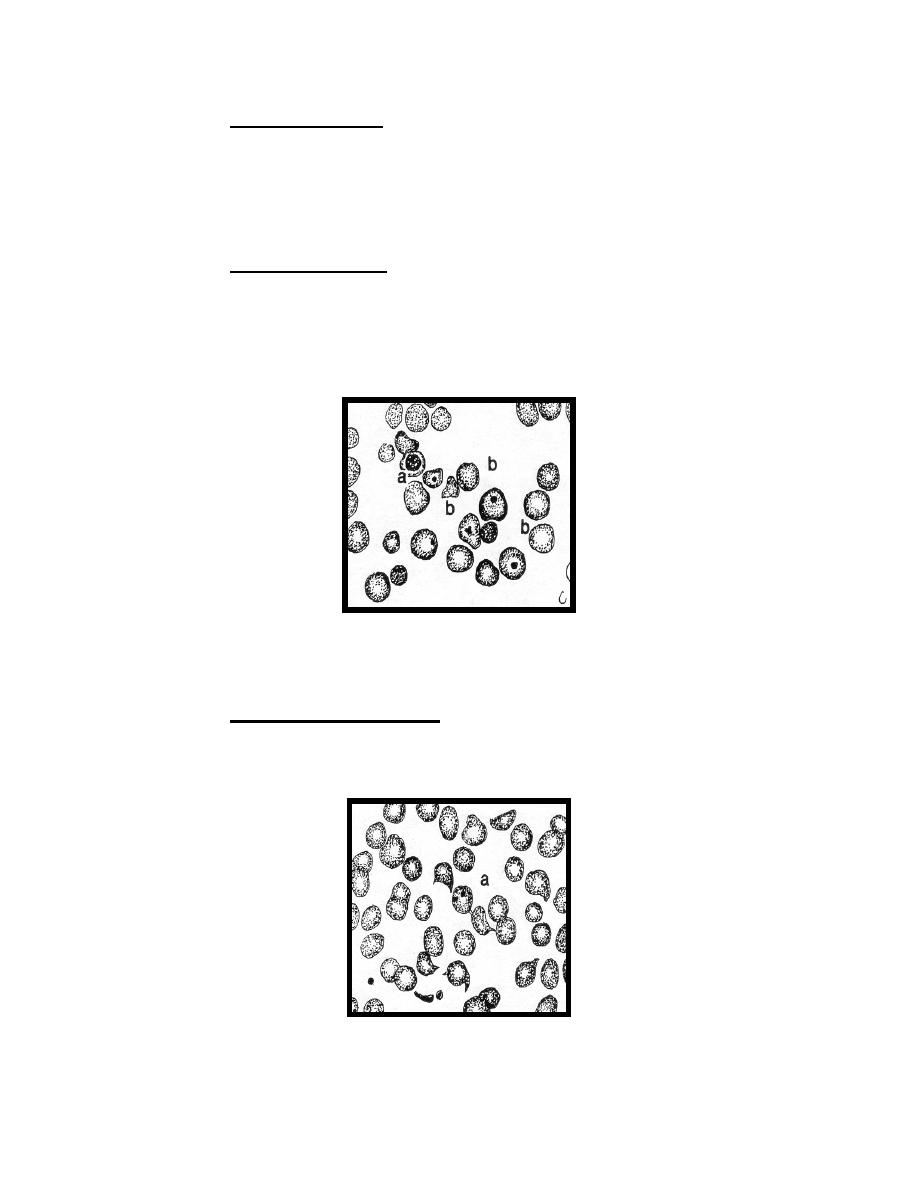
(2) Polychromatophilia. This term describes non-nucleated erythrocytes
that show bluish coloration instead of light pink. Polychromatophilia is due to the fact
that the cytoplasm of these cells does not mature, resulting in the abnormal persistence
of the basophilic cytoplasm of the earlier nucleated stages.
d. Inclusions.
(1) HoweII-Jolly bodies. These are nuclear remnants found in the
erythrocytes of the blood in various anemias. They are round, dark violet granules
about one micron in diameter. Generally, only one Howell-Jolly body will be found in
any one red cell. However, two or more may sometimes be present. HoweII-Jolly
bodies generally indicate absent or non-functioning spleen. They occur in megalobastic
anemia and in other forms of nuclear maturation defects.
Figure 4-2h. Variations in erythrocytes:
a. Metarubricyte
b. Howell-Jolly Bodies
(2) Cabot's rings (ring bodies). These are bluish threadlike rings found in
the red cells in the blood of patients with severe anemias. They are interpreted as
remnants of the nuclear membrane and appear as ring or "figure-eight' structures.
Usually only one such structure will be found in any one red cell.
Figure 4-2i. Variations in erythrocytes:
a. Cabot Ring.
MD0853
4-10



 Previous Page
Previous Page
